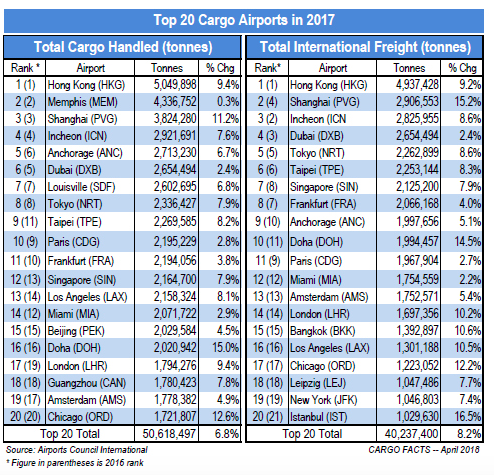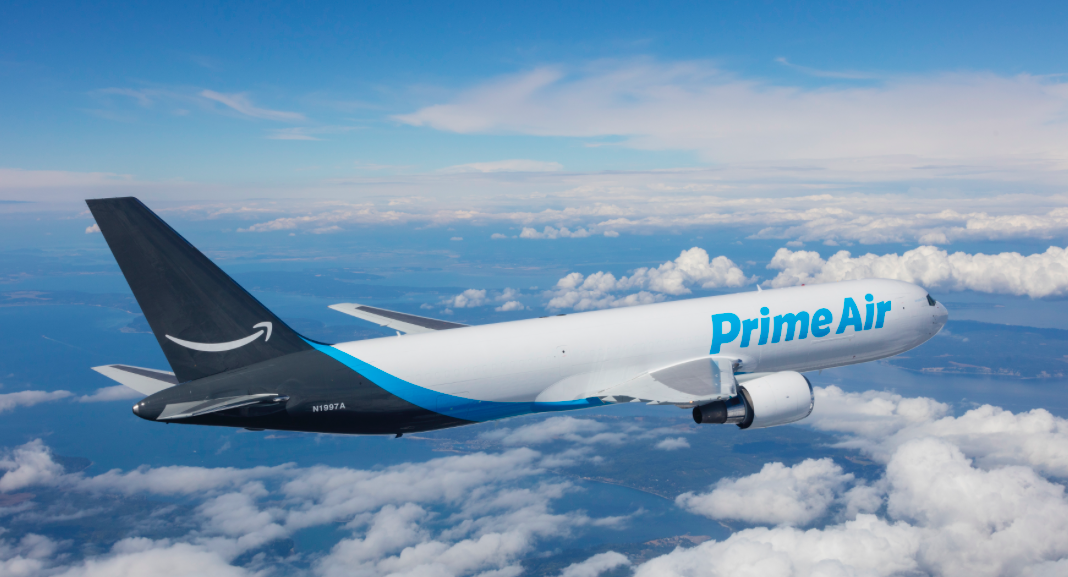Amazon Air will fly into Anchorage starting June 27. Online shoppers will find their Amazon Prime orders will be delivered a lot sooner — within two days perhaps, rather than two weeks.
Amazon currently uses UPS, the U.S. Postal Service, and Federal Express for Alaska orders. Those who order through Amazon Prime get free shipping in exchange for a membership fee ($119 a year), but usually the goods take the slow route and not all goods are eligible for Prime free delivery. Those companies will still deliver packages to your door, but Amazon is taking away some of their air freight business.
With Amazon flying in and out of Ted Stevens International Airport, this is a big change for consumers. Look for many more Alaskans to sign up for Amazon Prime membership and for more items to be made eligible for free shipping.
But this also represents a new challenge for retailers in the 49th state, especially those along the Railbelt. With an Amazon order just two days away, Alaskans can shop from their easy chairs with even greater confidence. And there are cost-savings considerations in having items delivered to your door, rather than traipsing about looking for a specific “thingy.”
WHAT’S IN IT FOR AMAZON?
For Amazon, Alaska is still a fragment of a market. With only 737,000 residents in the state, why would Amazon establish a freight flight of its own, bringing goods north to a state with a population of less than Columbus, Ohio? And if the freighters come north filled to the gills with boxes, what will they take south with them?
This is clearly a beachhead focused on bigger markets, an investment in the future. What the Seattle-based company realized is that Ted Stevens International Airport is just hours from Asia — a huge market, not only for things coming into the United States, but also a market for Amazon goods heading to the Orient and the billions of people living there.
Look for Amazon to lease space at the airport for a maintenance hangar, and possibly a logistics facility. UPS and FedEx built their multi-million dollar logistics centers years ago because of Anchorage’s advantages.

Amazon Air now has 50 planes and flies into more than 20 airports. The company has increased its delivery network with 185 fulfillment centers globally, and over 10,000 truck trailers.
At the International Paris Air Show, Amazon announced a partnership with GE Capital Aviation Services to lease an additional 15 Boeing 737-800 cargo aircraft. These will add to the five it already leased earlier this year.
Amazon will also open new air facilities this year at Fort Worth Alliance Airport, Wilmington Air Park (Ohio), and Chicago Rockford International Airport. The main Amazon Air Hub at the Cincinnati/Northern Kentucky International Airport will open in 2021.
In Anchorage, Amazon Air will be using the Airport’s Kulis Business Park, south of the east-west runways, said Jim Szczesniak, Ted Stevens International Airport Manager.
“This is the second new airline we’ve welcomed to Ted Stevens Anchorage International Airport this quarter, and another business being added to the airport’s business park on the former Kulis Air National Guard Base,” he said on Facebook. “Ted Stevens Anchorage International Airport is perfectly situated to support the movement of e-commerce goods between Asia and North America, and this new business fits with our strategy of maximizing ANC’s potential for development.”
What do you think are the pros and cons of Amazon starting air freight service to Anchorage? Will it change your shopping habits? Leave your comments in the comment section below.

As a former aviation dispatcher with many cargo airlines in Anchorage, I can tell you that this is nothing but a great “win-win” for everyone! More jobs on the ground, more revenue for the airport and more happy customers in the Amazon realm living in Alaska. It has the potential of getting even bigger and who knows, maybe Amazon builds its own freight redistribution center, to help serve Alaska’s growing population.
Lucky for us AOC isn’t from here, huh?
Hahahahahaha – I like that one?. We are exceedingly lucky!! So far……….
Not so lucky however for the retail stores. They are slowly losing any advantages they have. I don’t think people will be happy once the big name stores leave.
Amazon might also be able to get into the lucrative fresh fish market if they are flying into ANC with mostly non-perishable freight anyway. Loading up fresh seafood & taking it to the lower 48 or overseas would be very viable.
Having loaded fresh seafood in the past I know when the fish come in & if its not going to be frozen, it has to move immediately. There are also live seafood air freight shipments like crab & geoduck. All this perishible seafood needed to be moved at one time can create jamups. The one thing you don’t want is live or fresh shipments sitting around (even refridgerated) waiting for space on a jet. It’s called coldchain in the business.
If Amazon is not into this yet I see a good chance they might start. All they need is the refers etc and if they are establishing a base anyway its not that much more to do.
So a customer in New Mexico might order up 25 pounds of fresh Alaska seafood on the Amazon website & 24 hours later its on their doorstep. This would likely entail agreements between Amazon & commercial fishers of all sizes.
Its even more viable because the jets are already going to ANC & back anyway full or not.
Can anyone say monopoly? I guess as long as you can buy it cheap, who cares right. Where is all the handwringing about climate change and carbon footprints? Didnt we just come up with an action plan for Anchorage to reduce our contribution to climate change? Airfreighting goods is the most expensive, environmentally irresponsible way to move products (other than fresh seafood perhaps). As retailers one by one dissapear from the landscape, who will be left, one big monster company? The jobs created by an Amazon hub here will be dwarfed by the jobs lost as local businesses one by one go under. The brave new world awaits. Frankly, it scares the hell out of me.
Wait, what’s wrong with Monopoly?
Why do you hate the free market?
The market builds efficiency, and Monopolies are the most efficient.
Be gone, commie!
Exactly!
This is the best thing that has happened to Alaska for a long time. I buy the majority of the things I need off Amazon. Their free shipping changed my life and I was no longer stuck having to pay inflated prices locally or get gouged by companies charging a fortune for shipping. I’d get so irritated by Fed-Ex and UPS charging outrageous shipping costs even after establishing huge shipping hubs in Anchorage. Good for Amazon, welcome to Alaska!
There is no such thing as free shipping.
Nothing is free my friend…there is always a price to be paid.
I disagree. After the competition gets wiped out and all that’s left is a monopoly, the monopoly firm will raise prices because they can. In the long term monopolies are horrible for consumers. Look at what happens to prices when Southwest airlines enters a market with just a few players – airfares drop! Competition is what keeps everyone honest.